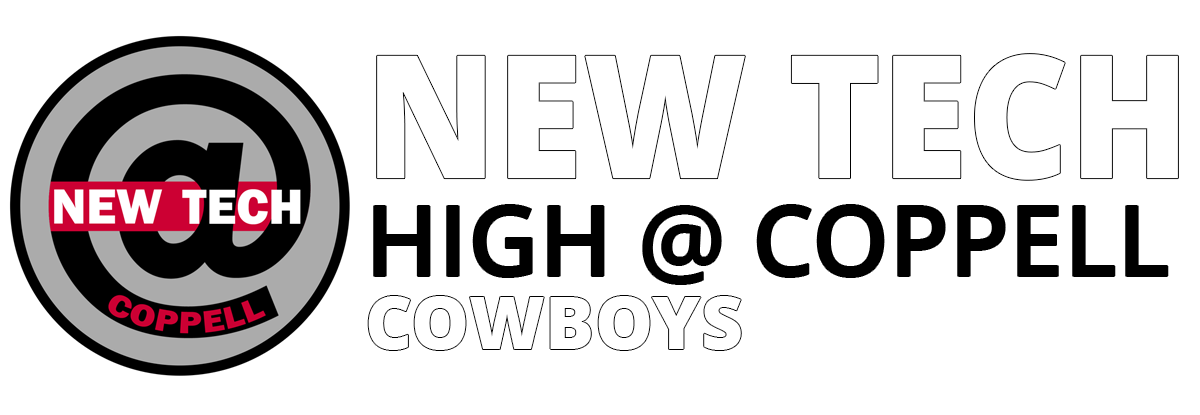What is Project-Based Learning?
What is PBL?
Project-Based Learning (PBL) is a core instructional tool at New Tech High @ Coppell, influencing both classroom instruction and the broader school culture. It is a holistic pedagogical model that extends from lesson design to educator collaboration and school-wide initiatives.
PBL revolves around exploration and choice, aligning well with Universal Design for Learning (UDL). The process begins at the scheduling level to ensure facilitators have opportunities to collaborate—individually, within their departments, and across disciplines. Facilitators also dedicate time to designing projects that incorporate community partnerships, enhancing real-world connections for learners.
Planning and Structure
Facilitators begin with the end in mind, identifying the key ideas and authentic tasks learners should master. They consider community involvement and how students will engage in real-world applications that foster college and career readiness. They also determine potential culminating events where learners can demonstrate their understanding.
During planning, facilitators align projects with TEKS standards, College Board descriptions, CCMR rubrics, and New Tech Learning Outcome rubrics. They create a structured learning path by assessing prior knowledge, identifying necessary resources, and balancing direct instruction with exploration. They also set project parameters to optimize voice and choice while ensuring alignment with learning objectives. Feedback checkpoints, benchmarks, reflection opportunities, and assessment strategies—including individual and group components—are incorporated into the timeline, allowing facilitators to maintain year-long curriculum pacing.
Project Implementation
Each project begins with a guiding question—an overarching, complex inquiry that learners will revisit throughout the process. Facilitators introduce this question during an entry event designed to spark curiosity and engagement. Learners then encounter an entry document, which outlines the project framework and includes intentional “cookie crumbs” left by the facilitator to guide discovery.
Following this, learners engage in the "Knows & Need to Knows" protocol, identifying what they already understand and what they need to learn. This serves as the project’s launch point. Learners then form teams and create a social contract that defines responsibilities, benchmarks, disciplinary expectations, and collaboration guidelines, ensuring smooth teamwork.
As learners progress through the project, they conduct research, solve problems, and seek facilitator support through workshops. Facilitators provide direct instruction when needed and guide learners in developing essential skills such as critical thinking, research, communication, and collaboration. Reflection is embedded at multiple points, allowing students to assess their mastery of content as well as their personal growth in both hard and soft skills.
Learners refine their work through multiple iterations of the Praise, Question, Suggestion (PQS) protocol. This structured feedback process involves presenting portions of the project, receiving peer and facilitator input, and making revisions based on praise, inquiries, and suggestions.
Culmination and Assessment
The project concludes with a culminating activity and the creation of a final product. By this stage, most assessments have been completed, and the final presentation serves as both a demonstration of learning and a celebration of progress. In many cases, oral communication skills are also evaluated during the final presentation.
Learners reflect on their experiences, considering how they might improve collaboration and performance in future projects. Assessment occurs through five key learning outcomes: Written Communication, Oral Communication, Agency (professional ethics and executive function), Collaboration, and Knowledge & Thinking. Each project-specific rubric is designed to address these outcomes, ensuring learners engage with them multiple times throughout the year.
Beyond the Classroom
Facilitators apply the PQS protocol to their own project designs, collaborating within their Professional Learning Communities (PLCs) and across disciplines. This cross-curricular approach allows educators to refine projects based on diverse perspectives.
Additionally, leadership teams develop school-wide projects that engage Networking Teams in collaborative challenges. Student Government and Hope Squad lead initiatives that provide valuable resources and learning opportunities on topics such as mental health, leadership, teamwork, and substance abuse awareness.
At New Tech High @ Coppell, learners play an active role in shaping their school environment. The PBL process extends beyond academics, influencing systems like the trust card program, campus events, clubs, and student recruitment. The result is a learner-driven culture where students take ownership of their education and community.
